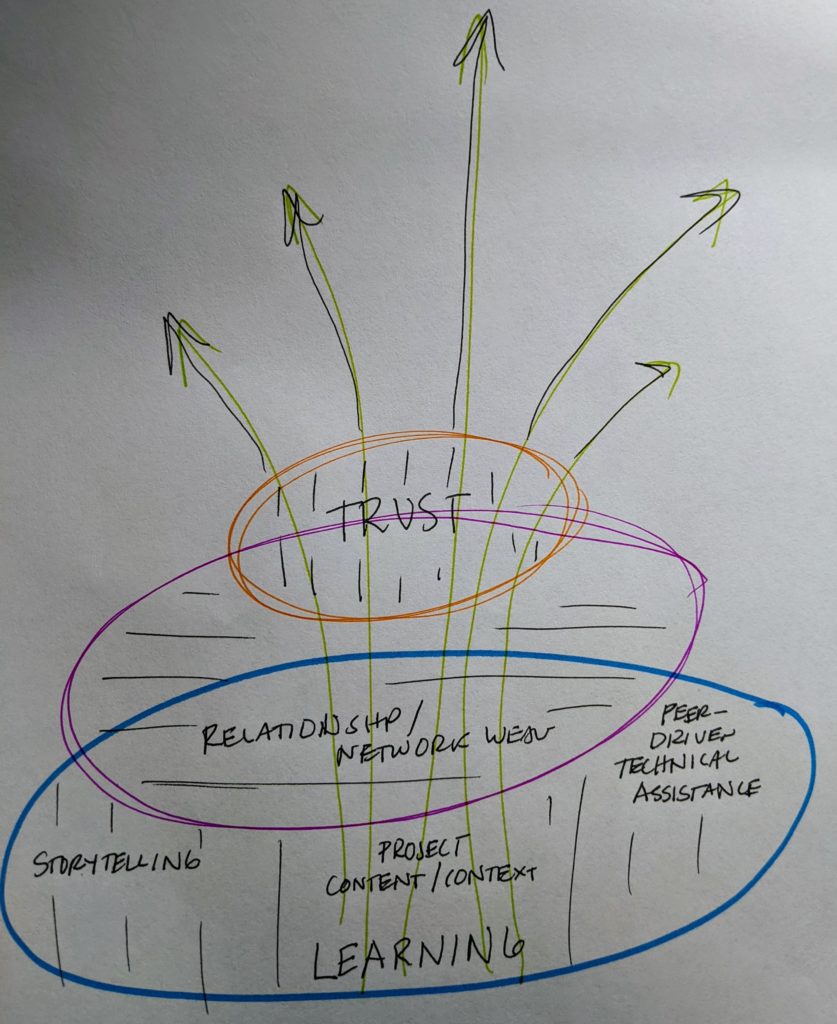Earlier this month on the KM4Dev email list, one of my colleagues pointed to a study comparing F2F and online idea generation in the journal Nature and concluding F2F produced better results.
Virtual communications curbs creative idea generation, by Melanie S. Brucks and Jonathan Levav was a fascinating read. The authors did more to test their hypothesis compared to other studies I’ve read which claim one environment or other is better for some function. I take them with the proverbial grain of salt. This one got me thinking more deeply. Here is a bit from their summary:
Departing from previous theories that focus on how oral and written technologies limit the synchronicity and extent of information exchanged4,5,6, we find that our effects are driven by differences in the physical nature of videoconferencing and in-person interactions. Specifically, using eye-gaze and recall measures, as well as latent semantic analysis, we demonstrate that videoconferencing hampers idea generation because it focuses communicators on a screen, which prompts a narrower cognitive focus. Our results suggest that virtual interaction comes with a cognitive cost for creative idea generation.
Brooks and Levav
Narrower cognitive focus! In the example studies, they talked about the power of objects around is in a physical room to help us get creative. We limit those options when we diligently focus on the screen online. Wait, we focus on the screen because that is what we have habituated as proper virtual behavior. “Focus on the screen! Avoid distractions! And then we lose a bit of ourselves. Have you ever had that experience at the end of a Zoom where you have to reground yourself in your physical space?
Broader cognitive focus! Our habits impact our participation and our results. What if it is our lack of imagination and attention to what full presence and participation means that hampers us? What if we invited ourselves to use our F2F external environment WHILE attending to the screen? What if stepping away from the screen was part of the idea generation practice which not only widened our visual cognitive focus, but reawakened our kinesthetic selves?
It is convenient to assume that environment trumps all. And thus we begin to bias our thinking about the issue of F2F vs online options and choices that are so top-of-mind these days.
Maybe we are asking the wrong questions. What if the question was “what kinds of focus most contribute to idea generation?” And THEN ask how that focus can play out across different environments. This might be a great area for experimentation!





